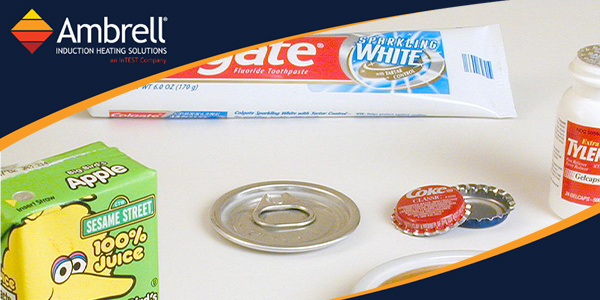Induction Brazing an Aluminum Assembly
Objective A company wanted to assess using induction heating for their aluminum assembly brazing process, and contacted THE LAB at Ambrell to utilize...
Applications
Applications: More
Applications: More

Industries:
Industries: More
Industries: More
Industries: More

Products:
Products: More
Services:
Services: More

Learn:
Learn: More
About:


Induction heating, a process that uses electromagnetic induction to heat electrically conductive materials, is used for several applications in the packaging industry. This technology offers numerous advantages over traditional heating methods, making it a valuable tool for manufacturers in countless industries.
Induction heating involves generating an alternating current (AC) in a coil, creating a magnetic field. When a conductive material, such as metal, is placed within this magnetic field, it experiences eddy currents. These eddy currents, in turn, generate heat due to resistive losses.
The packaging industry leverages induction heating for a variety of applications, including:
Sealant Activation:Induction heating's role in the packaging industry continues to become more prominent. By offering precise control, energy efficiency, and versatility, induction heating is helping manufacturers to produce high-quality, innovative packaging solutions.
Visit our website to read application notes involving induction applications in the packaging industry.

Objective A company wanted to assess using induction heating for their aluminum assembly brazing process, and contacted THE LAB at Ambrell to utilize...

Induction heating is a process that uses electromagnetic fields to heat electrically conductive materials. It has been used in numerous industries...

Induction heating, a process that uses electromagnetic induction to heat electrically conductive materials, is often thought of for large industrial...